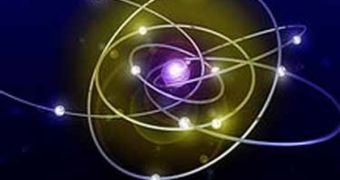The main issue plaguing researchers trying to devise quantum computers today is the fact that it's considerably more difficult to entangle electrons than it is to entangle photons. If that became a reality, then experts could finally use superconductor materials as a source of entangled electrons, which could lead to considerable advancements in the fields of quantum-network research. The electron pairs are also indispensable if quantum computers are to be interconnected with electronic chips, scientists say, quoted by Nature News.
Entangling two particles is a process through which researchers ensure that, in a particle pair, the influences that are exerted on one of them are evidenced on the other as well. This is very easy to do with photons, but it has proven to be a lot more complex when it comes to electrons. However, Swiss researchers at the University of Basel, led by expert Szabolcs Csonka, say that the breakthrough has to be made before more advancements can be attained in a wide range of research fields.
In superconductors, electrons naturally form entangled pairs. Electrons usually repel each other in these materials, but, under the correct temperatures, they form pairs and move around as units. Efforts that physicists have made, of extracting and then splitting up the pairs, have yielded little results and have proven ineffective. “Entanglement is inherent in these pairs,” UB team member Christian Schonenberger adds.
In its experiments, the UB team used an innovative approach to mining the electrons out of the material. It created an aluminum superconductor and attached nanowires to it that could have represented the particles' way out. Ironically, the key to the entire process did not prove to be offering the electron pairs a way out, but actually preventing them from getting out. When a high voltage was applied to the nanowires, they started acting like barriers, and electrons are known to perform something called quantum tunneling when presented with such an obstacle.
The pairs essentially drill their way out through the barrier, at a very small pace, allowing the researchers to catch and isolate them as they emerge. As they exit the superconductor and the nanowires, the electrons' natural repulsion force kicks in, and the pair splits. Each nanowire has a junction, and each of the possible avenues can only house one electron. Using this method, the UB team was able to produce and then separate streams of entangled electrons, the scientists report in the latest issue of the journal Nature.

 14 DAY TRIAL //
14 DAY TRIAL //